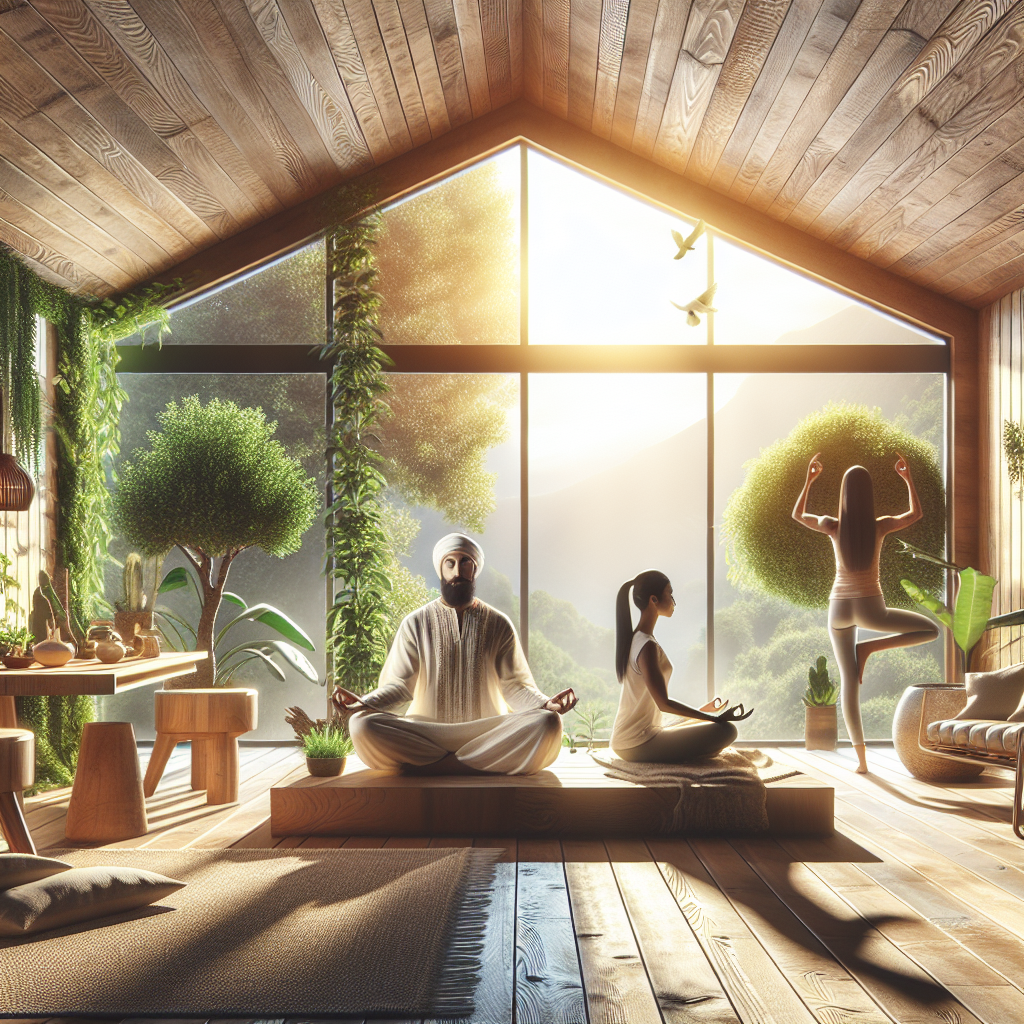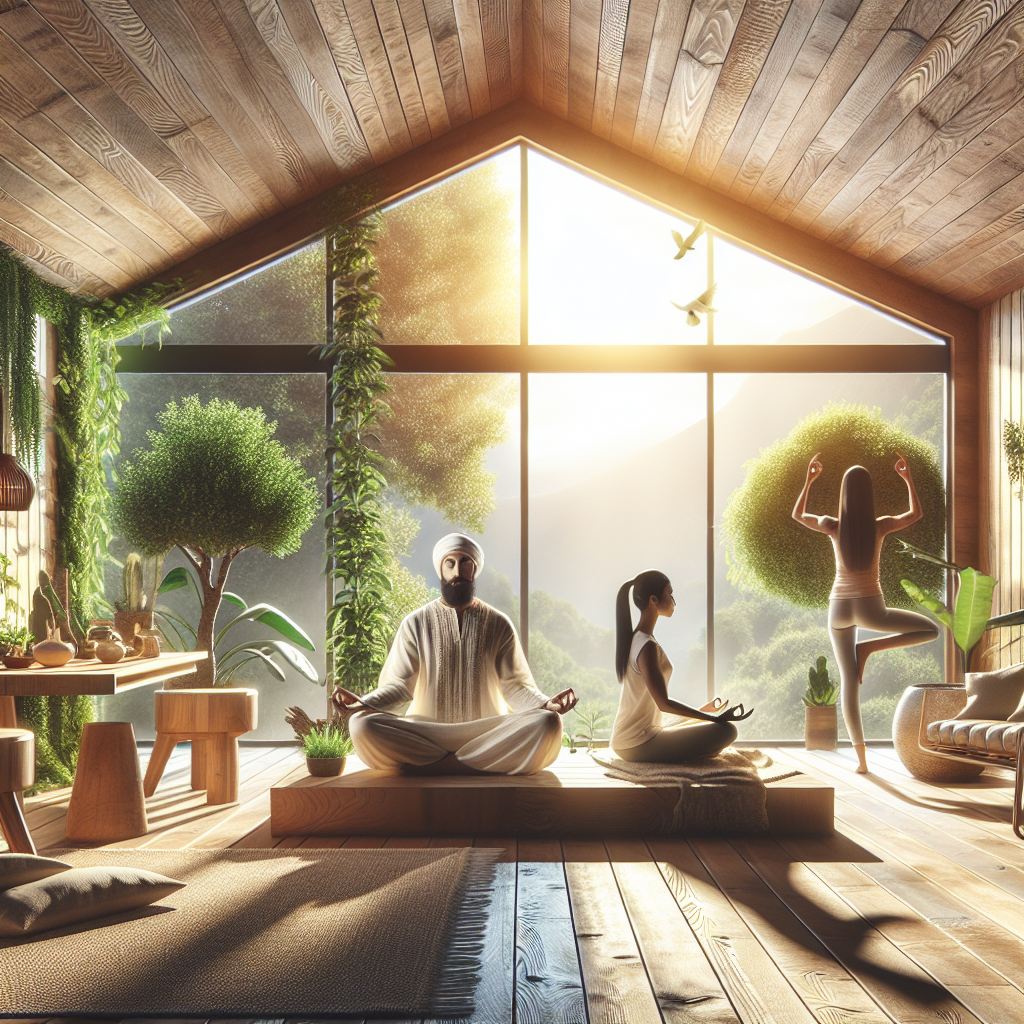Living a holistic lifestyle involves nurturing and nourishing all aspects of your being, creating a sense of harmony and balance in your life. While incorporating holistic practices into your daily routine can be beneficial, it can be challenging to know where to start. This article explores various home practices that can help you foster a holistic lifestyle. From mindfulness exercises to creating a serene environment, these simple practices can make a significant impact on your overall well-being. Discover how you can transform your home into a sanctuary that supports your journey towards a more holistic way of living.

Creating a Calm and Inviting Environment
Decluttering and organizing
Creating a calm and inviting environment starts with decluttering and organizing your living space. A cluttered and chaotic space can leave you feeling overwhelmed and anxious, making it difficult to relax and unwind. Take some time to go through your belongings and let go of anything that no longer serves you. Organize your belongings in a way that makes them easily accessible and visually pleasing. By creating a clutter-free environment, you can promote a sense of calm and tranquility in your home.
Incorporating natural elements
Bringing elements of nature into your home can have a profound effect on your well-being. Incorporating natural elements such as plants, stones, and a water feature can create a soothing and peaceful atmosphere. Plants not only add beauty to your space but also purify the air and increase oxygen levels, promoting a healthier indoor environment. Additionally, using natural materials like wood, bamboo, and cotton in your furniture and decor can create a sense of harmony and connection with the natural world.
Using soothing colors
The colors in your home have a significant impact on your mood and emotions. By using soothing colors such as soft blues, greens, and neutrals, you can create a peaceful and relaxing atmosphere. These colors have a calming effect on the mind and can help reduce stress and anxiety. You can incorporate soothing colors through paint, furniture, decor, and textiles. Experiment with different shades to find the ones that resonate with you and create the desired ambiance in your home.
Creating a cozy space for relaxation
Having a dedicated space for relaxation is essential for fostering a holistic lifestyle. Create a cozy nook in your home where you can unwind, meditate, or simply enjoy a moment of solitude. Fill this space with comfortable cushions, soft lighting, and items that bring you joy and comfort. You can also add elements like pillows, blankets, and candles to enhance the cozy atmosphere. Having a designated area for relaxation will remind you to prioritize self-care and provide a sanctuary where you can rejuvenate your mind, body, and soul.
Nurturing Mindfulness and Meditation
Designating a meditation area
Designating a specific area for meditation can help you establish a consistent meditation practice. Find a quiet and peaceful corner in your home where you can create a serene and tranquil space for mindfulness. You can place a meditation cushion or a comfortable chair, along with any objects or symbols that have personal significance to you. By having a dedicated meditation area, you are more likely to engage in regular meditation and cultivate a deeper sense of mindfulness in your daily life.
Practicing daily mindfulness
Mindfulness is the practice of being fully present and aware of the present moment. Incorporating mindfulness into your daily routine can help you stay grounded and centered amidst the busyness of life. Take a few moments each day to consciously focus on your breath, observe your thoughts and emotions, and connect with your surroundings. This can be done through formal meditation, mindful eating, mindful walking, or simply pausing and taking a few deep breaths throughout the day. Engaging in daily mindfulness practices can enhance your overall well-being and support a holistic lifestyle.
Deep breathing exercises
Deep breathing exercises are a simple and effective way to promote relaxation and reduce stress. By taking slow, deep breaths, you activate the body’s relaxation response and bring yourself into a state of calm. Practice deep breathing exercises in your meditation area or anytime you feel overwhelmed or anxious. You can inhale deeply through your nose, hold the breath for a few seconds, and then exhale slowly through your mouth. This mindful breathing technique can help you release tension and cultivate a sense of inner peace and tranquility.
Using soothing scents
Aromatherapy is a powerful tool for creating a calm and soothing environment. Certain scents, such as lavender, chamomile, and jasmine, have been shown to promote relaxation and reduce anxiety. Incorporate essential oils, scented candles, or natural incense sticks into your home to create a sensory experience that enhances your well-being. Experiment with different scents to find the ones that resonate with you and create a peaceful ambiance in your living space. Just a few drops of essential oil or the gentle flicker of a candle can significantly contribute to a holistic and serene atmosphere.

Prioritizing Sleep and Rest
Establishing a bedtime routine
Prioritizing sleep and rest is crucial for maintaining overall well-being and supporting a holistic lifestyle. Establishing a consistent bedtime routine can help signal to your body that it’s time to unwind and prepare for sleep. Create a relaxing nighttime ritual by engaging in activities that promote relaxation, such as reading a book, taking a warm bath, or practicing gentle stretching or yoga. Disconnecting from electronic devices at least an hour before bed and creating a calm and clutter-free bedroom environment can also contribute to a restful night’s sleep.
Creating a sleep-friendly bedroom
Your bedroom should be a sanctuary dedicated to rest and relaxation. Create a sleep-friendly environment by keeping the room cool, dark, and quiet. Invest in blackout curtains or eye masks to block out any external light that may disrupt your sleep. Use earplugs, a white noise machine, or calming music to minimize any distracting noises. Additionally, choosing a comfortable mattress and pillows that support your sleep posture can greatly enhance the quality of your sleep. By prioritizing the design and ambiance of your bedroom, you can create a serene and inviting space for rejuvenation.
Investing in a comfortable mattress and bedding
A good night’s sleep starts with a comfortable mattress and bedding. Your mattress should provide the right level of support and comfort for your body, ensuring that you wake up feeling refreshed and rested. Do your research and invest in a high-quality mattress that suits your sleep preferences and needs. Pair it with soft and breathable bedding, such as organic cotton or bamboo sheets, to enhance your sleeping experience. Making this investment in your sleep environment will have a significant impact on your overall well-being and support your holistic lifestyle.
Limiting screen time before sleep
The blue light emitted by electronic devices, such as smartphones, tablets, and televisions, can interfere with your sleep patterns. It suppresses the production of melatonin, a hormone that regulates sleep-wake cycles, making it harder for you to fall asleep and stay asleep. To prioritize your sleep and rest, it’s important to limit screen time before bed. Establish a digital curfew by turning off electronic devices at least one hour before sleep. Instead, engage in relaxing activities such as reading, journaling, or practicing meditation to help your mind and body unwind and prepare for a restful night’s sleep.

